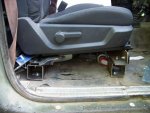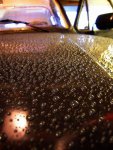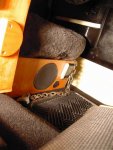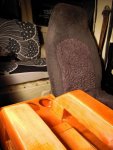First, i should freely admit a lot folks on this site are vehemently opposed to conversion. I did it for simplicity, reliability and ease of use as a daily driver and work truck in remote areas. Mechanically, conversion is simple, but you do have to pay attention to detail. Instructions are available in the Resources section published by a joint US Forest Service Agency. Roscommon Equipment Center.
Here's a post I did from a previous thread...
I was very hesitant to convert my 24V, in part because I prefer the originality, respect the capabilities of 24v starting and partly because of the strongly expressed warnings here on S.S. However, after careful, lengthy consideration and investigation I made the plunge to 12v for the following reasons:
1) Operating conditions: IMHO, the 24v system is optimal if operated and maintained in a fleet of 24v vehicles. However, mine was not going to be in such an environment. I was going to use mine as a construction assistance and recreation vehicle in remote areas (primarily the Central Sierra Nevada Mountains in California). Living in a 12v world complicates even simple things like getting and receiving jumps starts and loaning the vehicle to neophyte users.
2) Leveraging new technology: Technology advancements such as the 12v reduction gear starter motor narrowed the starting advantages of the 24v system and make conversion more attractive. I use two bad-ass WalMart batteries in parallel to drive that starter. I also run Wellman 050 glow plugs which are sensational. At any temperature I've tested so far (down to 30 degrees) the truck starts at the touch of the switch. Sweet!
3) Simplicity = reliability, all things being equal. A 12v conversion gave me the opportunity to simplify my starting and charging system, including actual elimination of the 24v starter relay.
4) Resources: I had enough experience, resources and advice to believe I could do a professional, sanitary and robust conversion that could easily be returned to stock as desired. Remember, technically a good conversion should be a cinch. In fact, it would be a simple matter to leave EVERY 24v component in place save for the starter motor.
5) Operational flexibility: The 12v system offers much, much greater flexibility and options. For example I power auxiliary 12v equipment off the rear passenger compartment terminal blocks. Very handy.
6) Low Risk: As the Roscommon Equipment Center instructions show, the conversion is conceptually simple and low risk. It's important to pay attention to detail, however. Don't scrimp, insist on robust connections and bullet proof grounds.
7) Running dual isolated systems: As detailed in the Roscommon instructions, you have the option of retaining the two alternators and splitting the system into two isolated power sources. In my case, one alternator charges the vehicle power system (two batteries in their original locations in parallel) and the other drives a 3rd deep cycle battery and big inverter to plug in power tools and drive other auxiliary electrics.
8. Redundancy: I love it! The redundancy of retaining the two alternators and running split, isolated systems is a great advantage and comfort when running in remote areas. In case of battery or alternator failure in the vehicle charging and starting system, I have a spare alternator and battery at the ready. The swap is quick and easy. And as I indicated, retaining the two alternators facilitates reconversion if desired.
9) More flexibility and simplicity: The fuse block and every other system is now pure 12v; adding stuff, experimentation and diagnostics are easier.
10) Reliability: I don't like not being able to bench test the GP controller card and I don't have the resources to properly follow the TMs for testing of individual circuits. I dread troubleshooting GP card weirdness (and I've had more than my share)...
From what I've been able to research thus far, the most common reason for failure of the glow plug controller card in the stock system, is an over-voltage condition (over 12v) that blows out a resistor in the circuit. Outside of that, they seem to be pretty robust. Eliminating the 24v thus eliminates the most common reason for GP controller card failure. And I also don't have to worry as much about cascading failure of glow plugs. I like minimizing risk.
11) Cost: Converting to 12v costs less than buying a new 24v starter motor.













